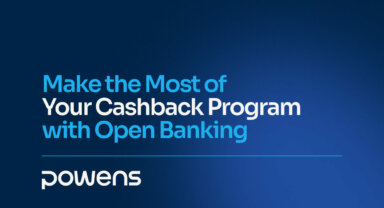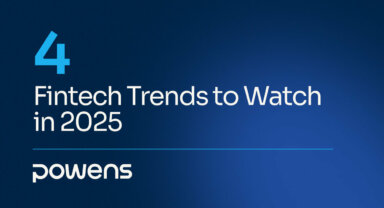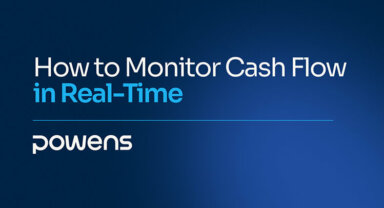We’ve witnessed many advancements in payment technology over the last year, along with heightened regulatory attention on the industry. Below, we give insights into four key trends carving a new path toward transaction efficiency and security, and how to leverage these shifts for business growth in 2025.
1. Real-time payments
Real-time payments have taken charge of the European payments industry, driven by regulatory and technological advancements.
The European Parliament and Council adopted the Instant Payments Regulation in March 2024, aiming to make instant payments more accessible and cost-effective. One key provision of the regulation mandates that payment service providers (PSPs) offer instant payments at the same cost as standard credit transfers. By January 2025, PSPs must comply with this rule, fundamentally altering pricing models and encouraging broader adoption.
Meanwhile, account-to-account (A2A) payments have risen in popularity, with 37% of payment executives expecting A2A transactions—both standard and instant—to offset card transactions by 2027. A2A payments’ ability to bypass traditional card networks offers cost savings and operational efficiency, but not all A2A transactions are instant. Real-time payments act as an enabler for instant A2A transactions, bringing unparalleled speed to the equation.
👉 Read more about Powens’ instant A2A payments solution
2. Advancement in Risk Mitigation
As fraud risks have evolved, so have the technologies that address them, particularly in the area of risk mitigation.
Bank account aggregation has become a cornerstone for managing financial risks. Aggregation solutions unify client financial data across multiple sources, such as bank accounts or savings accounts, making it easier to detect irregularities in financial behavior that could signal potential risks. These solutions also rely on APIs to integrate fraud detection and risk management tools seamlessly into operational workflows.
Automated data processing has further transformed risk management. For example, Powens’ Account Check solution simplifies bank identity verification through automated, Open Banking-based IBAN verification. This process enables businesses to retrieve bank ownership data in seconds, streamlining customer onboarding and transaction management while enhancing security protocols.
3. EU payment regulation changes
From instant payments to data governance, regulators are making payment security and efficiency a priority in 2025. Upcoming regulatory deadlines to be aware of, and which are heavily influencing upcoming payment trends, include:
Instant Payments Regulation:
This regulation came into force in April 2024, requires PSPs and Banks to enable instant payments at no additional cost compared to standard transfers. The goal is to democratize access to instant payments and foster a more integrated EU payments market.
By January 2025, PSPs must implement these changes, positioning instant payments as the norm rather than the exception.
Data Act and Data Governance Act:
While the Data Governance Act facilitates voluntary data sharing, the Data Act, applicable from September 2025, mandates improved data accessibility and interoperability.
For the payments sector, these frameworks will enhance data-sharing capabilities between financial institutions, boosting innovation in data-driven payment solutions and enabling more personalized financial services. For example, payment providers could use enhanced data sharing to offer real-time credit scoring for merchants or buyers.
Payment Services Directive 3.0:
PSD3 and its accompanying Payment Services Regulation aim to modernize the payment landscape. By promoting fraud prevention and leveling the playing field between banks and non-banks, PSD3’s measures will enhance competition and innovation.
For instance, tighter rules on data-sharing will ensure that third-party providers can offer services without compromising user security. Payment gateways, for example, might need to implement additional safeguards to meet stricter compliance standards while onboarding third-party services.
Digital Operational Resilience Act:
The Digital Operational Resilience Act (DORA) went into force in January 2023, with the official application of the regulation fast approaching on 17 January 2025. The goal of DORA is to strengthen IT security across the financial sector, with its rules and standards applying to entities like banks, insurance companies, and investment firms.
Electronic Identification, Authentication, and Trust Services:
Published in 2014, the Electronic Identification and Trust Services Regulation (eIDAS) established a standard framework for digital identity and authentication in Europe. Though still a useful regulation, it required some updates to address discrepancies seen across different Member States, which came in the form of the European Digital Identity Framework (EUDI). EUDI requires Member States to offer at least one EU digital identity wallet to citizens by 2026. These wallets will simplify user authentication in payments, enabling seamless and secure transactions across Member States.
4. Encapsulated payments
Encapsulated payments represent the next stage in payment innovation, an evolution of embedded payments that integrates data-driven functionalities.
Embedded payments focus on building native payment experiences within platforms, websites, or apps. Encapsulated payments take this further by wrapping embedded financial products with data, unlocking additional capabilities such as automated reconciliation and streamlined authorization.
How does this work? Encapsulated payment solutions leverage Open Finance interoperability to connect financial data from multiple sources with a platform’s embedded payment services. This integration enables use cases such as:
- Automating invoicing and payroll in ERP and accounting software.
- Simplifying rent collection and reconciliation for property management.
- Reducing reliance on intermediaries in cross-border transactions.
By combining embedded payment technology with Open Finance data integration, encapsulated payments empower businesses to create cohesive, efficient, and scalable financial ecosystems.
Get a head start on the payment trends of 2025 with Powens
Powens’ Open Finance platform provides payment solutions that help your business stay ahead of the curve while ensuring compliance with evolving regulations. Explore how our offerings can position your organization for success in the rapidly changing payments landscape.
Our solutions include:
- Data and document aggregation, including banking accounts and wealth solutions
- Data processing solutions, such as Account Check for automated identity authentication
- Payment solutions, like Core & B2B direct debit, instant and ordinary SEPA Credit Transfers and A2A Open Banking payments.
Contact Powens to get ahead of payment trends today.

 Dec 19, 2024
Dec 19, 2024 














